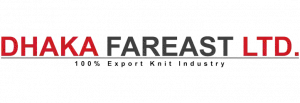Knowing how clothing prices are set in Bangladesh is crucial. This knowledge benefits consumers, retailers, and industry pros. Bangladesh is a key player in garment production, serving global markets. Factors like production costs, demand, and supply affect pricing.
Cost of Raw Materials
In Bangladesh, clothing prices hinge on raw material costs. These materials include fabric, thread, buttons, zippers, and extras. Their prices fluctuate with global trends, currency rates, and supply chain issues. To stay profitable, Bangladeshi manufacturers keep an eye on these costs. Then, they adjust their prices.
Labor Costs
In Bangladesh, labor costs are key in setting clothing prices. The garment industry is labor-intensive, involving millions of workers. Their wages for basic work, overtime, and benefits impact costs and, thus, retail prices. These wages are controlled by minimum wage laws, productivity, skill levels, and labor market conditions.
Production Overheads
Bangladeshi garment production costs include factory rent, utilities, maintenance, and administration. These costs are distributed across the produced items. Manufacturers work to boost efficiency and cut expenses. This strategy ensures they stay competitive and profitable.
Technology and Machinery
Upgrades in technology and machinery affect clothing prices in Bangladesh. They boost efficiency, cut labor costs, and enhance quality. Yet, these benefits come with high initial and running costs. Thus, garment makers must balance the gains against the impact on prices and profits.
Quality and Design
The quality and design of clothes greatly impact their prices in Bangladesh’s garment industry. High-quality fabric, expert work, and complex designs lead to higher prices. Manufacturers of premium items face higher production costs but target customers who value quality and beauty. Meanwhile, cheaper, mass-produced clothes suit budget-conscious shoppers. They focus on affordability.
Market Demand and Competition
Market demand and competition are key in setting clothing prices in Bangladesh. Factors include customer tastes, trends, brand image, and rivals’ deals. Firms decide on prices based on market studies, customer habits, and competitor comparisons. They aim to strike a balance between low prices and high value to attract buyers and boost sales.
Regulatory Compliance and Ethical Standards
In Bangladesh, following rules and ethics affects clothing prices. Manufacturers must obey laws, safety rules, and ethical sourcing. They also need to invest in workplace safety, employee welfare, and sustainability. These efforts can raise costs. Yet, shoppers now prefer ethical and sustainable brands. This choice impacts what they buy and how loyal they are.
Factors Influencing Clothing Prices
In Bangladesh’s garment industry, clothing prices are influenced by many factors. These include raw material costs, labor, production technology, quality, and market demand. Manufacturers use this information to set prices that keep them competitive and profitable. It’s important for stakeholders to understand these factors. This knowledge helps them make smart decisions and navigate the industry successfully.

